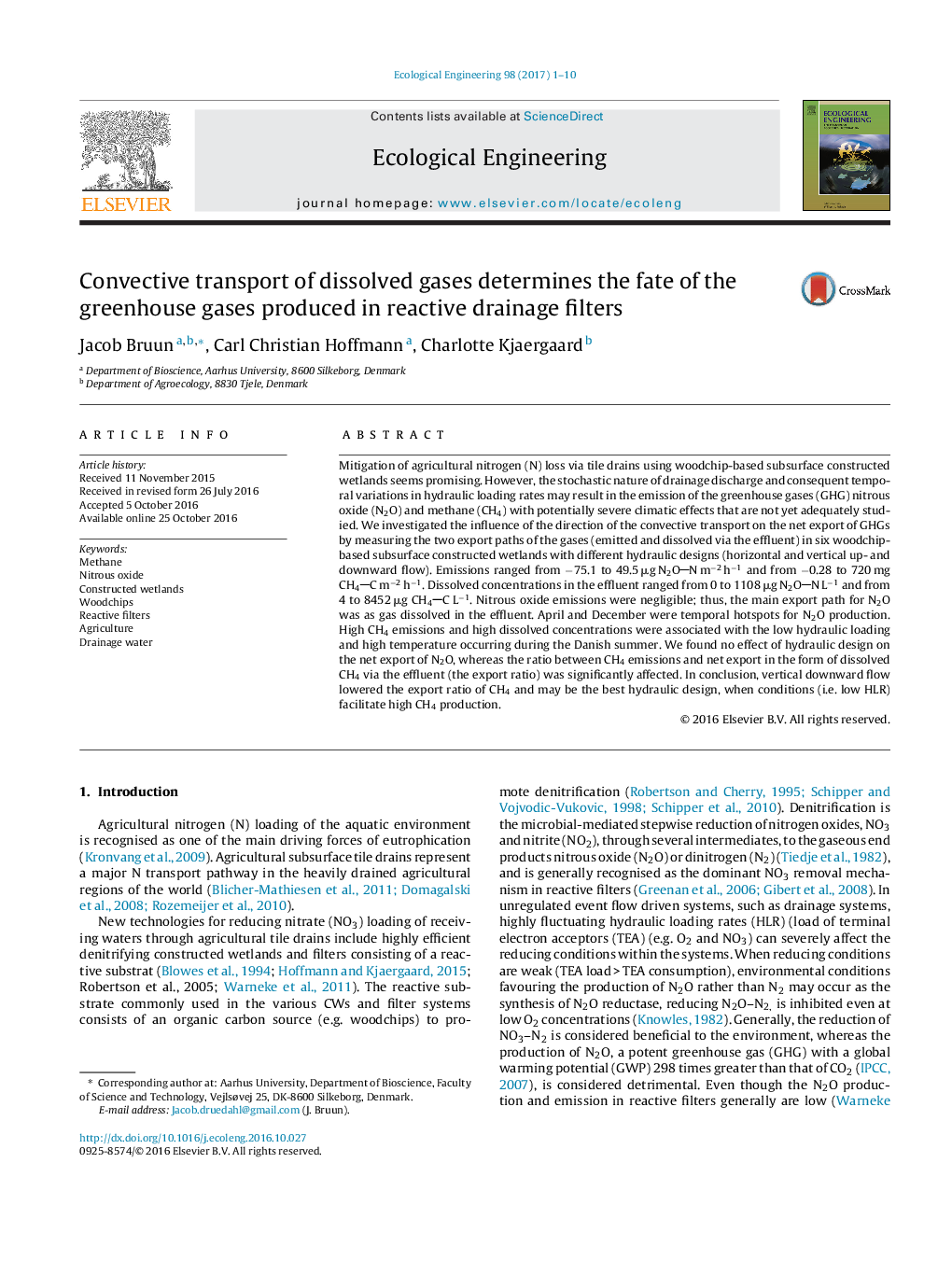| کد مقاله | کد نشریه | سال انتشار | مقاله انگلیسی | نسخه تمام متن |
|---|---|---|---|---|
| 5744047 | 1618001 | 2017 | 10 صفحه PDF | دانلود رایگان |
Mitigation of agricultural nitrogen (N) loss via tile drains using woodchip-based subsurface constructed wetlands seems promising. However, the stochastic nature of drainage discharge and consequent temporal variations in hydraulic loading rates may result in the emission of the greenhouse gases (GHG) nitrous oxide (N2O) and methane (CH4) with potentially severe climatic effects that are not yet adequately studied. We investigated the influence of the direction of the convective transport on the net export of GHGs by measuring the two export paths of the gases (emitted and dissolved via the effluent) in six woodchip-based subsurface constructed wetlands with different hydraulic designs (horizontal and vertical up- and downward flow). Emissions ranged from â75.1 to 49.5 μg N2ON mâ2 hâ1 and from â0.28 to 720 mg CH4C mâ2 hâ1. Dissolved concentrations in the effluent ranged from 0 to 1108 μg N2ON Lâ1 and from 4 to 8452 μg CH4C Lâ1. Nitrous oxide emissions were negligible; thus, the main export path for N2O was as gas dissolved in the effluent. April and December were temporal hotspots for N2O production. High CH4 emissions and high dissolved concentrations were associated with the low hydraulic loading and high temperature occurring during the Danish summer. We found no effect of hydraulic design on the net export of N2O, whereas the ratio between CH4 emissions and net export in the form of dissolved CH4 via the effluent (the export ratio) was significantly affected. In conclusion, vertical downward flow lowered the export ratio of CH4 and may be the best hydraulic design, when conditions (i.e. low HLR) facilitate high CH4 production.
Journal: Ecological Engineering - Volume 98, January 2017, Pages 1-10
